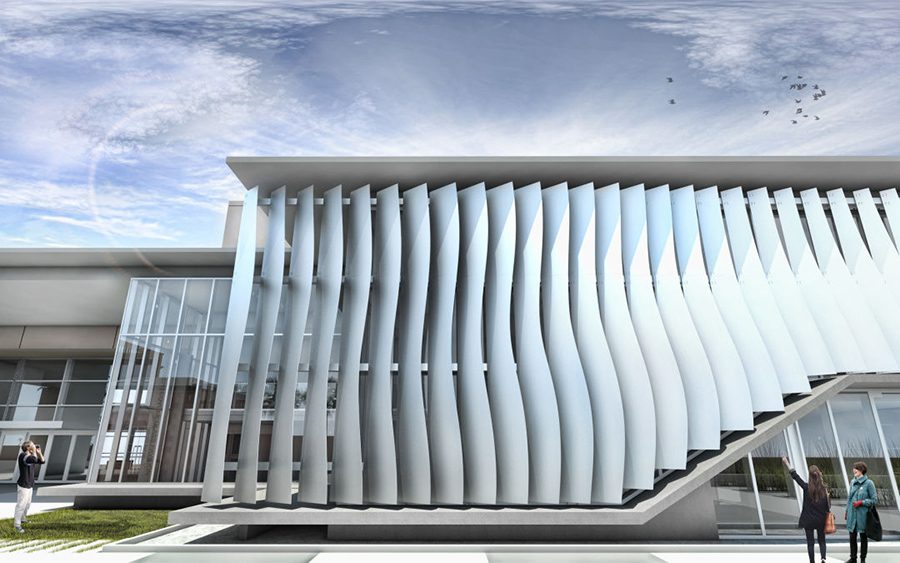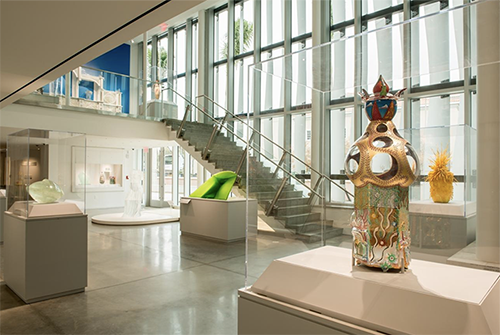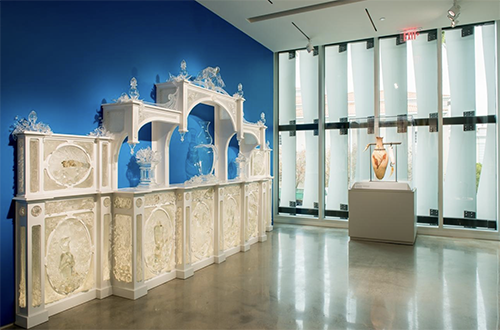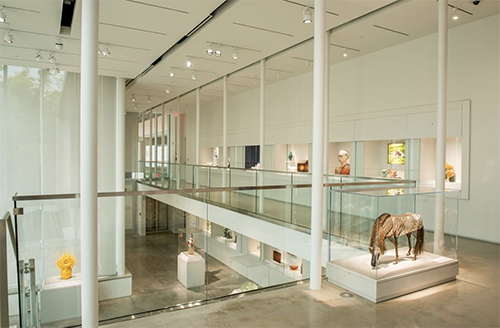
The John and Mable Ringling Museum of Art, the State Art Museum of Florida affiliated with Florida State University, will debut its stunning new Kotler-Coville Glass Pavilion on Monday, Jan. 22.

The 5,500-square-foot pavilion, designed by regional architecture firm Lewis + Whitlock, will showcase The Ringling’s growing and vibrant collection of studio glass and serve as the new formal entrance to the Historic Asolo Theater.
“It was only natural that the Kotler-Coville Glass Pavilion’s dynamic façade, with its light-controlling fins, would be inspired by the sculptural effects that wind and water have on sand, a principal ingredient in the glass-making process,” said Hays Layerd, creative director of Lewis + Whitlock. “Working together with The Ringling leaders to realize their vision of this important new addition to their historic site was exceptionally gratifying.”
The Glass Pavilion creates a beautiful entrance for the Historic Asolo Theater, which was designed in Asolo, Italy, in 1798 and acquired by The Ringling in 1950. The pavilion renovation also includes additional rehearsal and performance spaces, named the Charlotte and Charles Perret Family Performance Studio Space, for the Perret family’s generous donation toward the creation of the structure.
The majority of the glass displayed in the new pavilion comes as a gift from the Philip and Nancy Kotler Glass Collection and the Warren J. and Margot E. Coville Glass Collection. In addition to the dedicated glass gallery, The Ringling highlights its glass holdings in the Museum of Art through special exhibitions and installations.

The Kotlers and Covilles provided the lead financial support for this multimillion dollar project.
“These families share a mutual appreciation for the studio art glass movement and immense support for artists and arts organizations,” said Steven High, The
Ringling’s executive director. “We are grateful for their generosity and look forward to this auspicious new space on our campus that will introduce or reintroduce our community to the importance of studio glass.”
For the premiere installation, approximately 45 works of modern and contemporary glass art from five continents will be on display inside the pavilion — highlighting the strength, diversity and quality of The Ringling’s collection. Visitors will be able to explore a range of dynamic glass techniques as well, from cast and blown glass, to slumped glass and lume processes.
“For this exciting debut of the Glass Pavilion we aimed to truly represent the global character of The Ringling’s collection,” High said. “From Japan, Germany, the Czech Republic, Canada, Argentina and Australia, the innovative work that artists are creating in glass is truly breathtaking.”

The pavilion features floor-to-ceiling displays of studio art glass, grouped by country of origin, with more than 13 countries currently represented and works of art from the 1940s to the present. One of the recent gifts being showcased is the monumental glass and wood sideboard by American artist Beth Lipman, purchased through a generous gift by Ringling board member Dan Denton.
The project also received significant support from the Gulf Coast Community Foundation, which has been a long-standing donor to The Ringling, as well as a lead sponsor of the Art of Our Time, a program dedicated to contemporary art. The generosity of David and Mary Benfer, Charles and Charlotte Perret, Leon and Margaret Ellen and Willis A. Smith Construction was also pivotal to the completion of the Kotler-Coville Glass Pavilion.
###
The Ringling is a center for art and history, situated on 66 magnificent acres on the shores of Sarasota Bay. It is built on the remarkable legacy of circus entrepreneur, collector of art and financier John Ringling and his wife Mable.
The Ringling inspires visitors with an acclaimed collection of Old Master paintings, explores with them the diverse cultures and art of Asia, delights them with the story of the American circus as told through the first American circus museum as well as the world’s largest circus model, and transports them to the Roaring Twenties during a tour of the magnificent Ca’ d’Zan mansion.
The Ringling is also committed to exhibiting the work of an emerging community of living artists whose work moves beyond traditional practice and features dynamic and engaging contemporary visual and performing arts, including a diverse roster of theater, music, dance and film.




